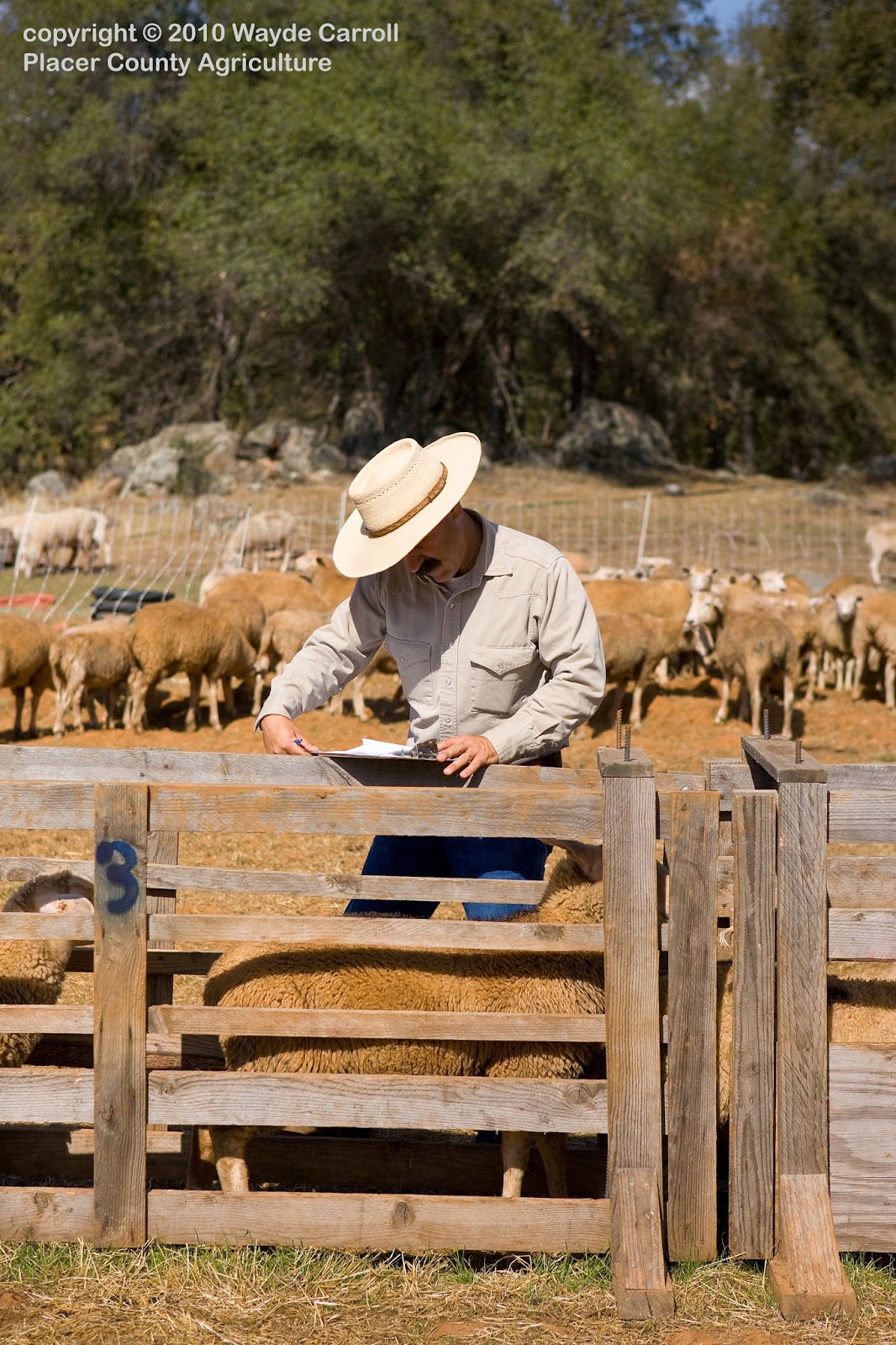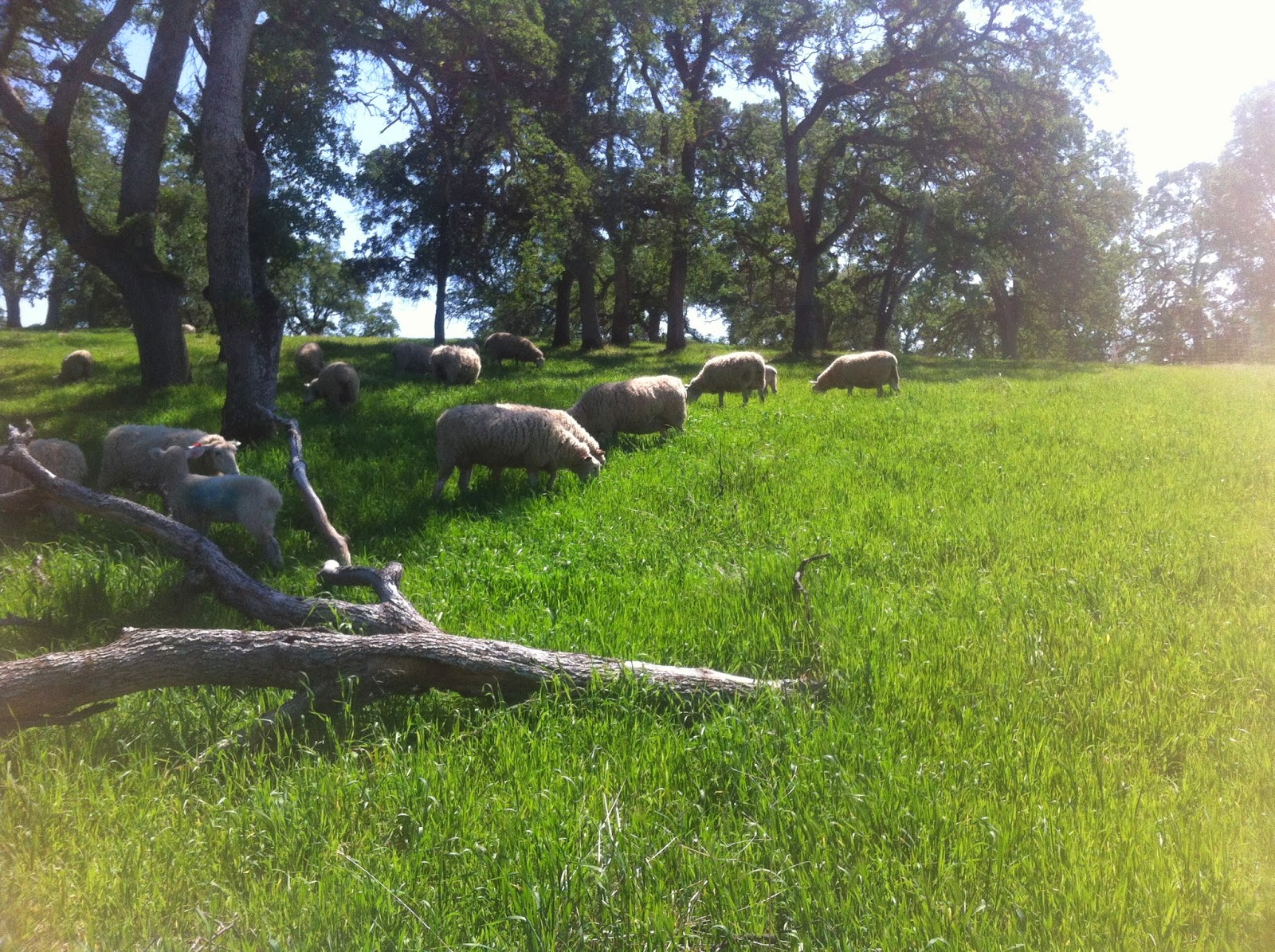Note: I wrote this article for the American Mule Association newsletter last year - thought it might be of interest here!
As a mule owner who also happens to be a commercial sheep
producer, I try to pay close attention to the health of my pastures. While our mules get most of their nutritional
intake from hay, we do provide pasture periodically during the year – both as a
supplemental feed source and for exercise.
We try to maintain quality pastures – both for the benefit of our mules
and for the protection of soil health and water quality. A basic understanding of the interaction
between soil, water, pasture plants and our animals is key to our success as
pasture managers.
Perhaps because we make part of our living from grazing
sheep, I view myself as a grass farmer who harvests his crop with livestock (sheep
and mules, in our case). This
philosophical approach means that we try to create the conditions favorable to
desirable grass plants AND unfavorable to weeds (a weed, by my definition, is
any plant that is growing where I don’t want it to grow). To create these conditions, we can manage a
few basic functions: stocking rate (the number of animals), stock density (the
number of animals per unit of pasture), rest from grazing, and timing of
grazing.
Our pastures are unirrigated annual rangelands – that means
they are dominated by annual grasses that complete their entire life cycle
(germination, growth, reproduction and death) each year. Typically, we’ll get enough rainfall in the
autumn to germinate our pastures. If
these rains come early in October (when the air and soil temperatures are still
favorable to grass growth), we’ll get fairly substantial growth before the
colder weather and winter dormancy set in.
Usually in December, shorter days and colder temperatures will slow or
stop grass growth. With adequate
rainfall, longer days and warmer temperatures in late February will bring our
pastures out dormancy, and rapid grass growth will begin sometime in
March. As temperatures continue to warm
and the spring rains diminish, our annual grasses will begin to mature (or head
out) and make seed. As these plants
begin to turn brown, their palatability and nutritional value diminish.
Grazing animals have three basic impacts on pasture
plants. First, obviously, they consume
plants through grazing. Not all grazing
is equal, however – we’ve probably all noticed that horses graze differently
than sheep or cows, for example. I’ve
also noticed that mules graze differently than horses – mules seem to enjoy a
wider variety of forage than horses do. These grazing differences are both
physiological and behavioral – horses and mules like different plants than cows
and sheep, and their mouths are constructed differently as well. The second impact is trampling – hoof action
impacts both plants and the underlying soil.
Finally, grazing animals cycle nutrients by depositing manure and urine
on the soil surface. These areas of
defecation and urination create what animal scientists call “zones of
repugnance” (I love the term!) – we’ve probably all also noticed that our mules
won’t eat around a manure pile for several months. This behavior has evolved as a
disease-avoidance mechanism for all grazing animals.
With management, these impacts can have a positive effect on
pasture health as well as on soil and water quality. By resting our pastures, we allow grazed
plants to regrow and out-compete undesirable weeds. By managing trampling and manure/urine
deposition, we can cycle nutrients and carbon through our soils. By leaving enough plant cover at the end of
the growing season, we can ensure that run-off water is filtered before it
reaches ponds or creeks and that we have a microclimate suitable for
germination with the fall rain.
Without management (usually through season-long grazing and
no rest for our pastures), these impacts can have a negative effect on pasture
health, soil stability and water quality.
Horses and mules will overgraze the plants they like, allowing weeds
(like yellow starthistle) to thrive.
Trampling when our soils are too wet can create soil compaction and bare
soil – which further encourages weed growth and causes erosion. In addition, bare soils are unable to filter
pathogens and other pollutants from our pastures – and these pollutants end up
in ponds and streams.
Finally, overgrazing is a function of time rather than
animal numbers. Overgrazing can occur
when we leave animals in a pasture too long – they take a second bite from a
plant before it has had enough time to recover.
Overgrazing can also happen when we cheat the rest period – that is,
when we put animals back a pasture before the plants have fully recovered from
the previous grazing. In either case, we
risk killing the plants we want and providing favorable conditions for more
weeds.
Here’s what we do to manage our mule/horse pastures: We keep
our animals off our pastures entirely during the fall germination/growth
period. We want our pasture grasses to
establish strong root systems during this time and for them to become
well-established prior to the onset of heavier winter rains (which will help
prevent erosion). During the fall and
winter, we feed hay in small paddocks that are surrounded by grass (as a buffer
that filters our run-off). Once rapid
growth begins in late winter or early spring, we’ll begin turning horses and
mules out onto our pastures for a few hours each day. We treat these like feeding periods – if it
typically takes our mules 2 hours to eat their hay, we’ll turn them out on
pasture for two hours in the morning or evening (sometimes both). We don’t leave them out around the clock, and
we don’t turn them out if the soils are saturated (which can accelerate
compaction). We’ll continue to do this
until the grasses start to mature. At
that point, we cease grazing with the equines.
In the late spring and early summer, when undesirable plants like yellow
starthistle and mustard begin to mature, we’ll try to put sheep on our pastures
to manage these weeds. As an
alternative, you might consider hand-pulling these weeds or using an approved
chemical application.
For more information on managing your mule pastures, check
out the following web resources:






























